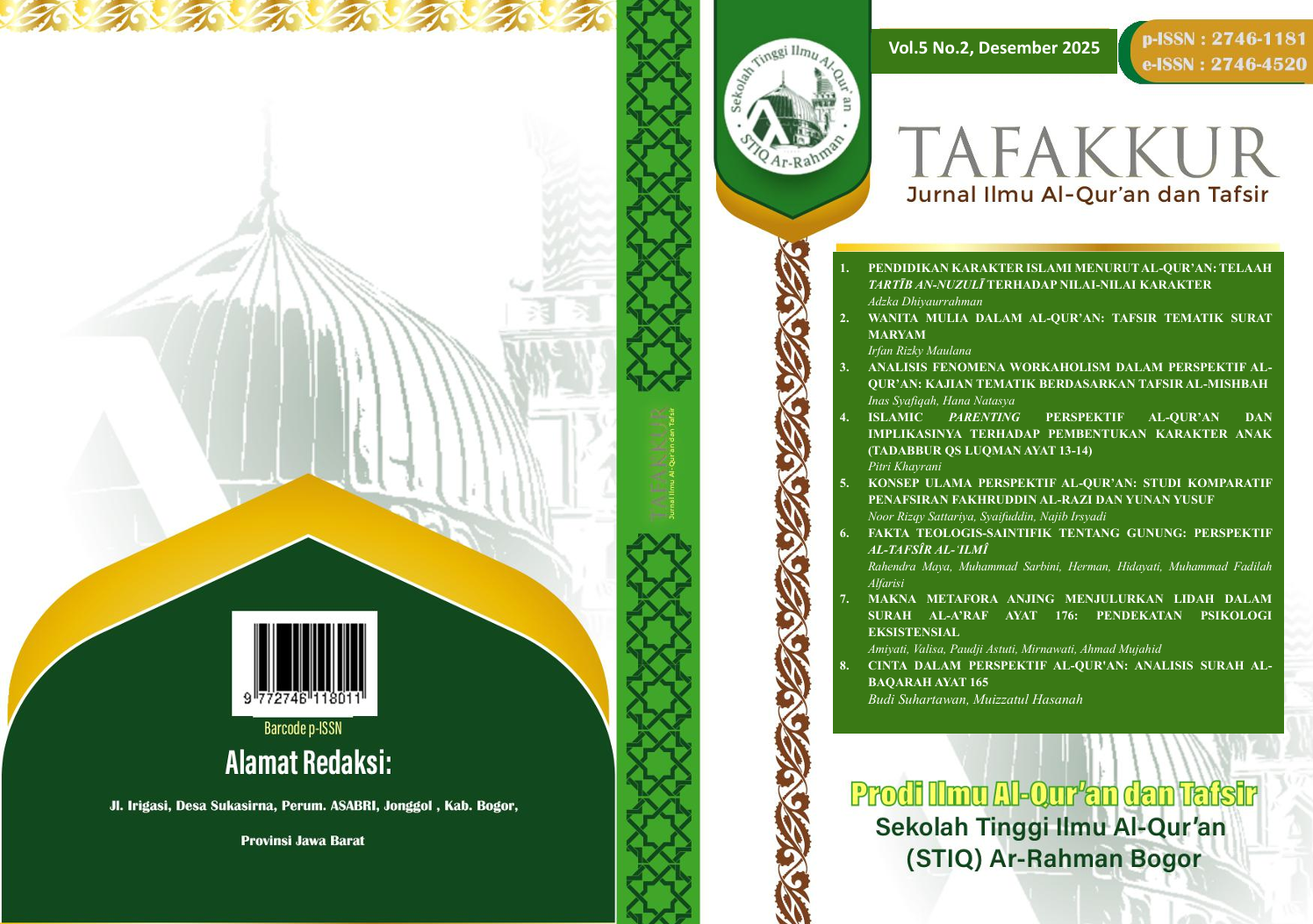KONSEP ULAMA PERSPEKTIF AL-QUR’AN
Studi Komparatif Penafsiran Fakhruddin Al-Razi dan Yunan Yusuf
DOI:
https://doi.org/10.62359/tafakkur.v5i2.481Keywords:
Fakhruddin Al-Razi, Yunan Yusuf, Comparative TafsirAbstract
This study examines the concept of ulama in the Qur'an through a comparative approach to the interpretations of Fakhruddin al-Razi and Yunan Yusuf. The analysis focuses on two verses Q.S. al-Shu‘arâ’`/26:197 and Q.S. Fâtir/35:27–29 with the aim of exploring a broader and deeper understanding of the term ulama. This research employs a qualitative method using a library research approach and a descriptive-comparative technique. The analysis is conducted through the stages of identification, description, and comparison of the interpretations offered by both scholars. The findings reveal that both Fakhruddin al-Razi and Yunan Yusuf define ulama as individuals with deep knowledge that leads to khashyah (reverence and submission) to Allah. Both emphasize the importance of integrating knowledge, practice, and piety in shaping the true character of an ulama. However, they differ in terms of the scope of knowledge and the interpretive approaches applied. Yunan Yusuf sees ulama not only as religious scholars but also as experts in general fields such as science and medicine, as long as their knowledge brings them closer to God, using the adabî-ijtimâ‘î (literary-sociological) approach. In contrast, Fakhruddin al-Razi interprets ulama as those who specialize in religious knowledge and comprehend God's greatness, which fosters piety, using a lughawî (linguistic) approach.
Downloads
References
Abdul Wahhab, M. A. M. (2012). Asbâb al-Nashr fî al-Qur’ân al-Karîm. Malaysia: Al-Madinah International University.
Baidan, N. (2002). Metode Penafsiran Al-Qur’an: Kajian Kritis terhadap Ayat-ayat yang Beredaksi Mirip. Yogyakarta: Pustaka Pelajar.
Dewan Redaksi Ensiklopedi Islam. (1993). Ensiklopedi Islam. Jakarta: PT. Ichtiar Baru Van Hoeve.
Mansur, M. (2019). Tafsir Mafatih al-Ghaib: Historisitas dan Metodologi. Sleman: Lintang Books.
Muhtarom. (2005). Reproduksi Ulama di Era Globalisasi. Yogyakarta: Pustaka Pelajar.
Nazir, M. (2003). Metode Penelitian. Jakarta: Ghaila Indonesia.
al-Razi, F. (1995). Al-Tafsîr al-Kabîr aw Mafâtih al-Ghaib. Beirut: Dar al-Fikr.
al-Rumi, F. (1419 H). Buhûts fî Ushûl al-Tafsîr wa Manâhijuhu. t.tp: Maktabah At-Taubah.
Shihab, M. Q. (2007). Ensiklopedia Al-Qur’an Kajian Kosakata (Vol. 3). Jakarta: Lentera Hati.
Yusuf, M. Y. (2023). Tafsir Al-Qur’an Juz XIX Juz “Wa Qala Al-Ladzina” ‘Ibadu Ar-Rahman (Hamba Allah Terkasih). Tanggerang: Lentera Hati.
Downloads
Published
How to Cite
Issue
Section
License
Copyright (c) 2025 Noor Rizqy Sattariya, Syaifuddin Syaifuddin, Najib Irsyadi

This work is licensed under a Creative Commons Attribution-ShareAlike 4.0 International License.
This work is licensed under a Creative Commons Attribution-ShareAlike 4.0 International License.










